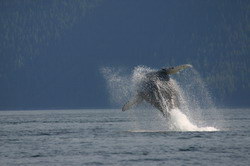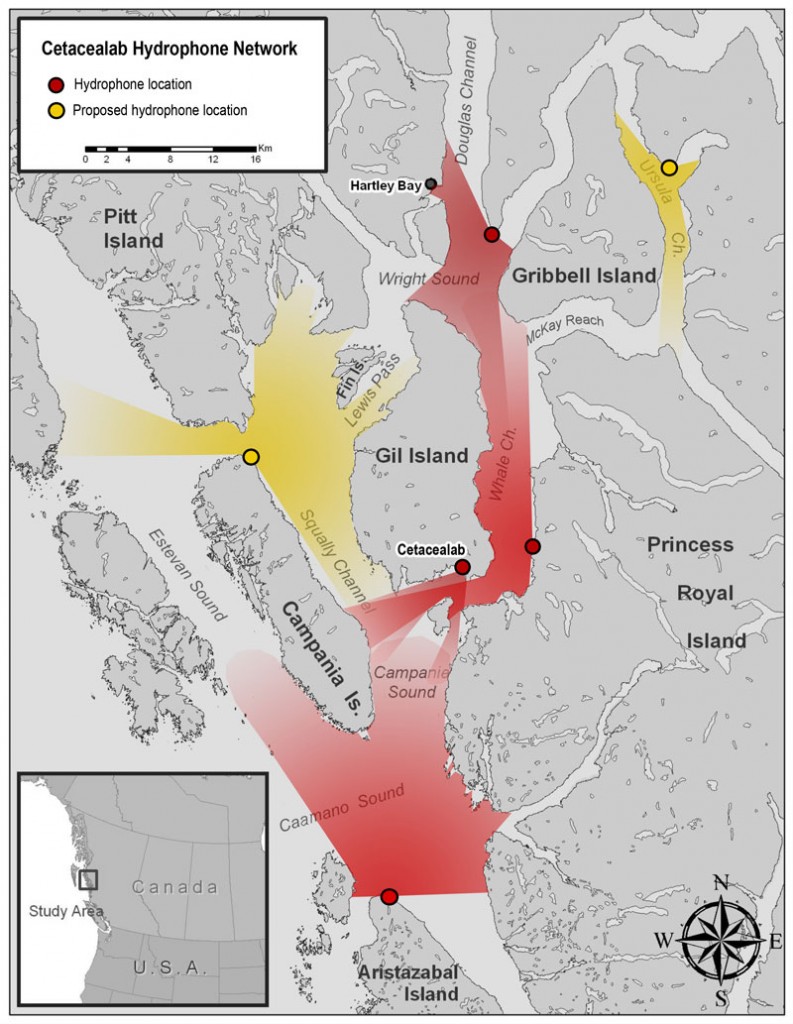Artemia welcomes this post from guest blogger Jessi Lehman (jessislehman(at)gmail(dot)com). Thanks Jessi!
It’s a sweltering mid-summer’s night in the middle of the continent. I’m at my desk, bare legs plastered to the wood chair with sweat, the sounds of traffic, asthmatic a/c units, and the smells of exhaust and cigarette smoke wafting through the open windows. But the screen in front of me is cool blue. Whales’ tails and gently glowing interactive maps, the lazy loops of sound waves and other data visualizations travel with soothing tidiness across the screen.
I’m listening live to sound feed from monitoring stations located throughout the worlds’ oceans. And it’s this auditory component that really creates the sensation of transportation, of immersion. In the heat and dust of a mid-continent urban summer, I’m listening to the Mediterranean, to the North Atlantic, to the coast of Japan.
Facilitating my escape from the oppressive commotion and combustion of the Midwest metropolis is a project called ‘Listening to the Deep Ocean Experiment’ (LIDO), from the Bioacoustic Laboratory at the Polytechnical University of Catalonia in Spain. LIDO also relies on partnerships with other ocean monitoring networks throughout the world, including Neptune Canada, “the world’s first regional-scale underwater ocean observatory network that plugs directly into the Internet.”
These networks generate various kinds of scientific data. When it comes to the acoustic register, a number of operations are taking place to create the seamless ‘undersea listening experience’ of which I am partaking. Numerous underwater acoustic observatories collect sound data, which the LIDO system then processes in real time, beaming the analysis to onshore research stations as well as the internet. It is this simultaneity that makes LIDO unique, and adds to the listener’s perception that these sounds are genuine, and alive.
These acoustic monitoring networks are clearly big operations, requiring the highest degrees of expertise, technology, and funding. It’s the Cetacea Lab of Max R’s study, but on massively ramped up, and with greater (and slightly different) ambit. The impetus behind these efforts is a mixed bag. As Max has explained, whales and other marine megafauna have high levels of auditory sensitivity and use sound to navigate. Sound is also the most accurate tool that humans have for understanding the sea floor and locating potential georesources such as oil deposits – it’s also how naval forces navigate and locate underwater targets or other vessels. The environment of the ocean is therefore fraught with uneven sonic confrontations. Perhaps most famously, the use of sonar by naval operations has been linked to several mass beachings of beaked whales and other species. Noise from fishing, shipping, and drilling likely has other, more insidious effects on undersea environments, but a great deal is still unknown when it comes to sound, the ocean, and its inhabitants. Yet, as science advances and as oceans are increasingly recognized as necessary but endangered resources for combating climate change, international concern about undersea noise is growing (see, for example, this recent online petition against the US Navy’s use of sound, with over 500,000 signatures). So these ocean observatory networks are about science and whale conservation but also about industry, development, and geopolitics.
But I want to come back to the experience of listening. What is it, exactly, that we hear? Mostly just faint static, like the sound of rain falling. Mostly I find myself listening in apprehension, for what could be there. Some would call this kind of undersea listening remote sensing, but it feels more like interspecies or even otherworldly eavesdropping. To be honest, it feels a bit weird. And it’s not just that I’m so far from the ocean, in a place dry and hot and decidedly un-marine. I can’t say that I understand the undersea environment better by listening to these sounds (though I can’t preclude the possibility that on some level I do). Mostly I am made aware that this is a world I don’t know, can’t know, and can only access thanks to complex technological mediations – and even then only marginally. This makes the experience of listening even stranger.
French philosopher Jean-Luc Nancy writes “to be listening is always to be on the edge of meaning” (2007:7). He claims that listening operates through a logic of evocation rather than manifestation. Listening to the ocean, and the creatures and creations that inhabit it, does not call them into presence the way visual data might. Rather, evocation makes the reader feel presence as an impulsion, a pressure. Instead of the presence of the thing (in this case the undersea world), evocative logic calls up anticipation, memory, desire – a summons not only to the object but also a resonance or reverberation within the subject (the listener).
So on one hand you might say that listening to the sea doesn’t give the listener the immediate access to the ocean that scientists intend. However, I think that the experience of remote undersea listening might also exceed their expectations. Listening to the sea doesn’t just put the listener into an evocative relationship with the mysteries of the deep. It also puts us into relation with capitalism, with science, and more precisely with the scientific-military-industrial complex. This is not to suggest that I, listening from Minneapolis, have a similar or comparable relationship with NATO’s military patrols as the whales, or as undocumented migrants traversing the Mediterranean. But listening to these highly mediated, always-already industrialized and militarized oceanic soundscapes lends an important new tone to Kelman’s assertion that, at their best, soundscapes provoke us to ask “Where does the exterior soundscape end and the interior narrative begin? What [do we] hear, what [do we] want to hear, and what [do we] dream?” (Kelman, 2010: 213). Where once our dreams were of playful whales, colorful fish, and vertiginous, endless blue, they might now be haunted by the clamor of the oil drill, the naval assault, and even impending environmental catastrophe.
Resources:
Kelman, A.Y. (2010). Rethinking the soundscape: a critical genealogy of a key term in sound studies. Senses and society, 5(2), 212-234.
LIDO: http://www.sonsetc.com/lido_p/
Nancy, J-L. (2007). Listening. Trans. Charlotte Mandel. Fordham University Press




